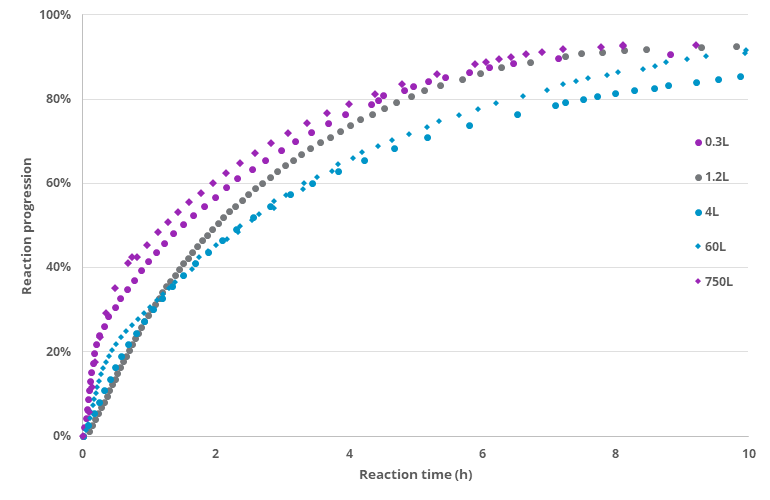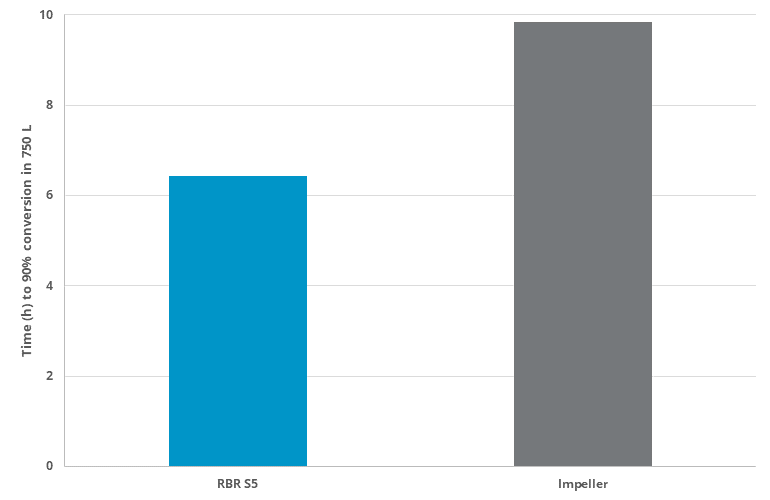In a collaboration with ChiralVision B.V., the lipase from Thermomyces lanuginosus - or TLL (Novozymes) - was immobilized on the acrylic beads IB-COV-1. The immobilized enzyme was then used to catalyze the hydrolysis of triglycerides in MCT oil, using rotating bed reactors (RBR:s) of different sizes.
The application was developed on 300 mL scale, and the activity of the immobilized enzyme was perfectly conserved for 10 cycles in a stability study. Afterwards, linear scale-up to other volumes was very straightforward; identical reaction conditions were applied on all scales, except for the rotational speed which was reduced with increasing reactor size. The ratios of solvent to substrate and catalyst were kept constant across all scales. Note the similar results at 750 L and 0.3 L (separated by a scaling factor of 2,500x).

On the largest scale, 750 L reaction mixture were hydrolyzed to 90% conversion in approximately 6 h. To compare the rotating bed reactor with alternative technologies, the reaction was repeated at the largest scale (750 L) with loose immobilized enzyme and an impeller in a stirred tank reactor. The rotating bed reactor was significantly faster than the conventional batch reactor, with the latter taking 1.5x more time to reach 90% conversion.

In conclusion, the RBR offers convenient reaction development in the lab, simple and predictable scale-up, and superior reaction performance than the stirred tank reactor. The excellent stability of the immobilized enzymes in the rotating bed reactor, and the instantaneous separation of the liquid and solid after each batch, makes the rotating bed reactor the most convenient framework for industrial scale biocatalysis using immobilized enzymes.



